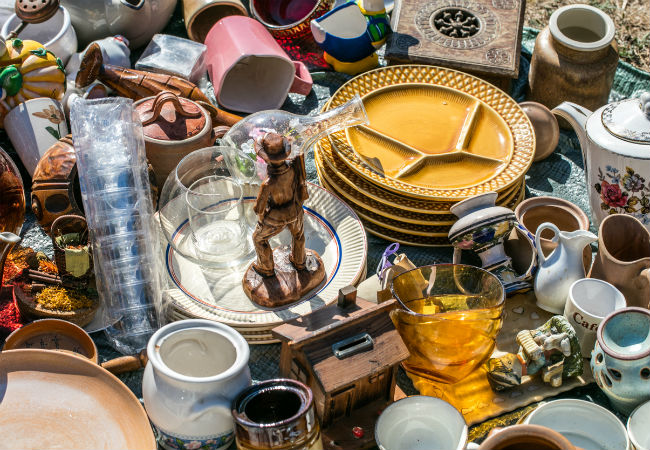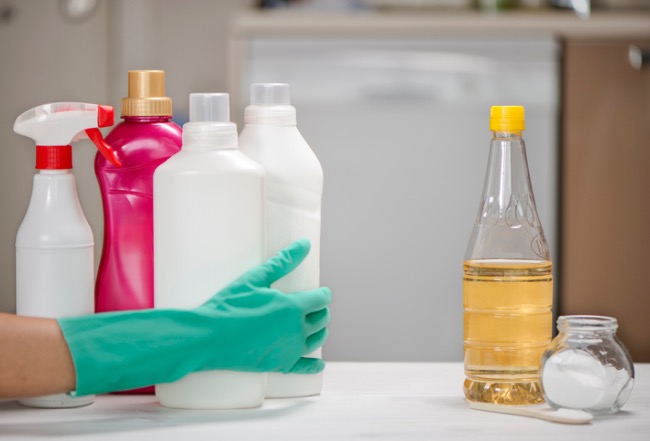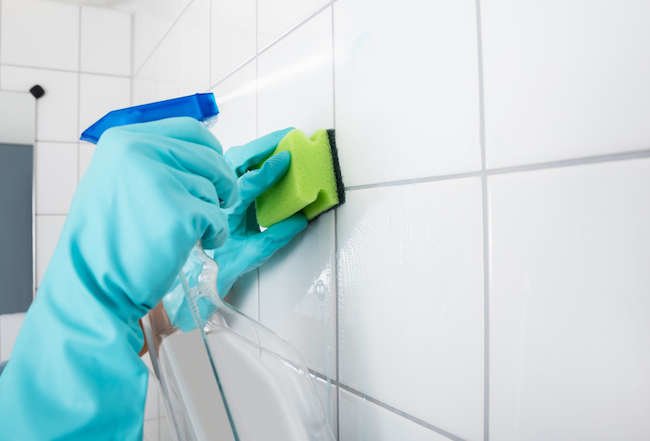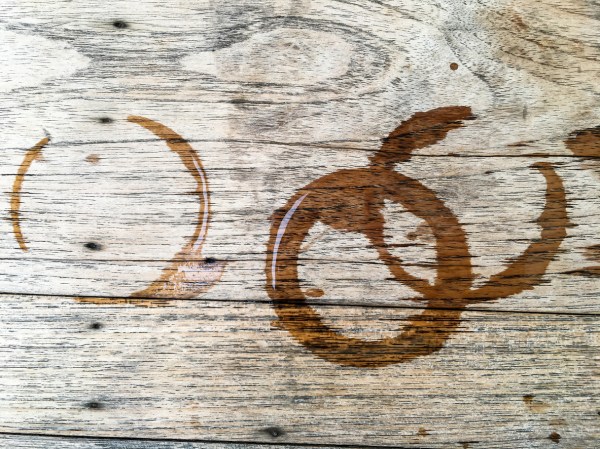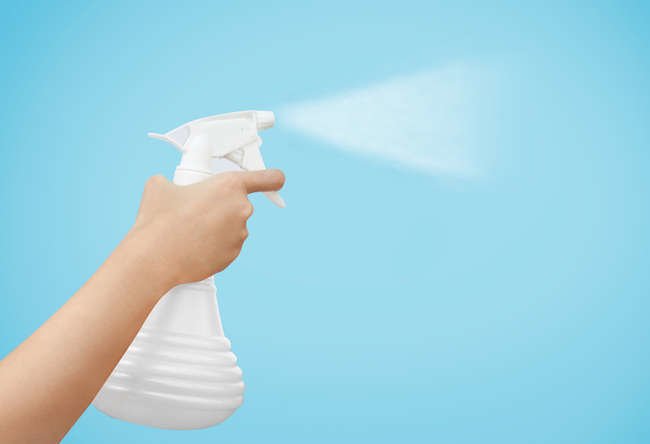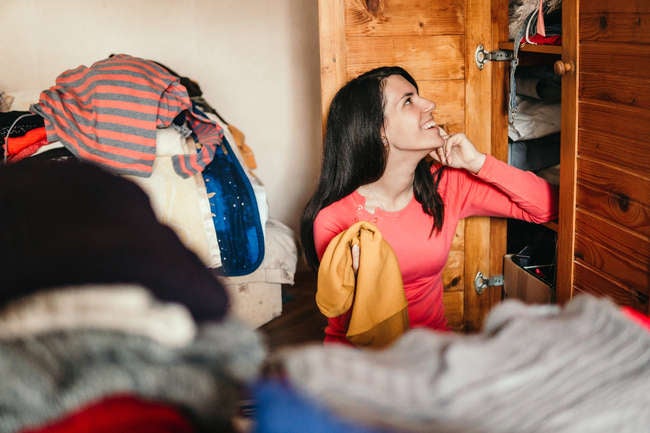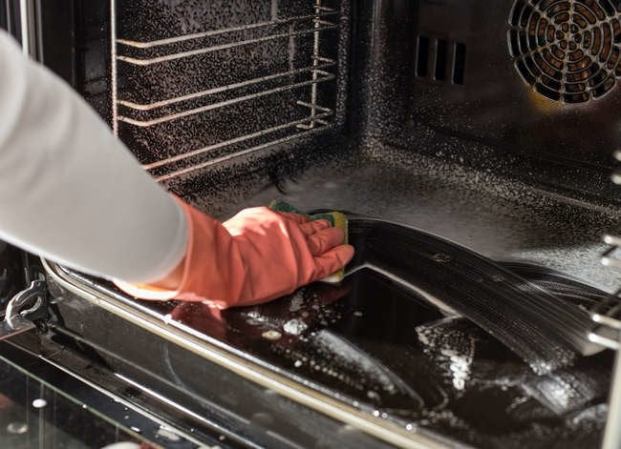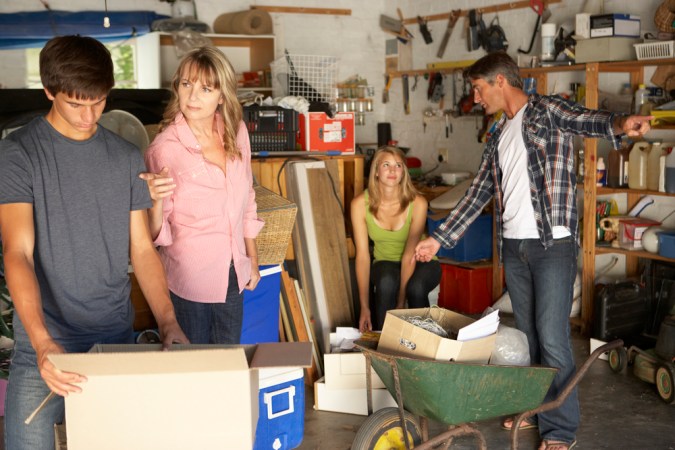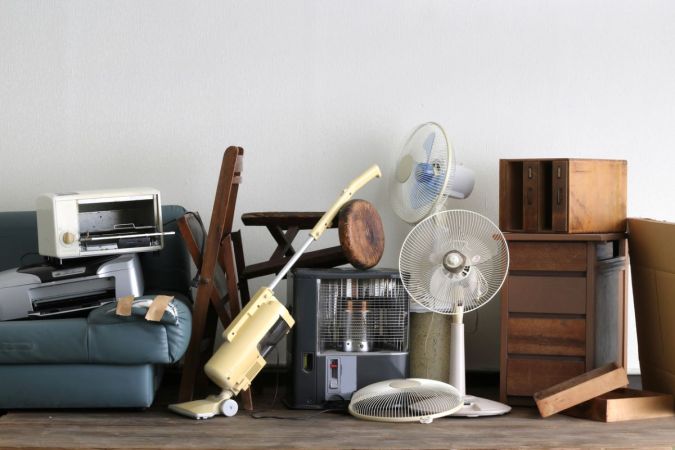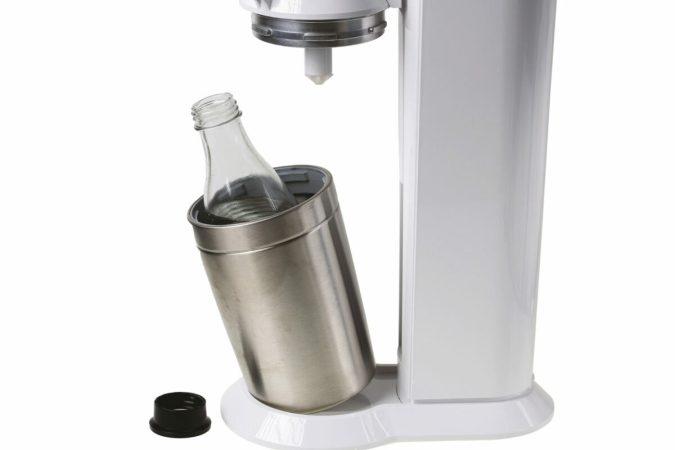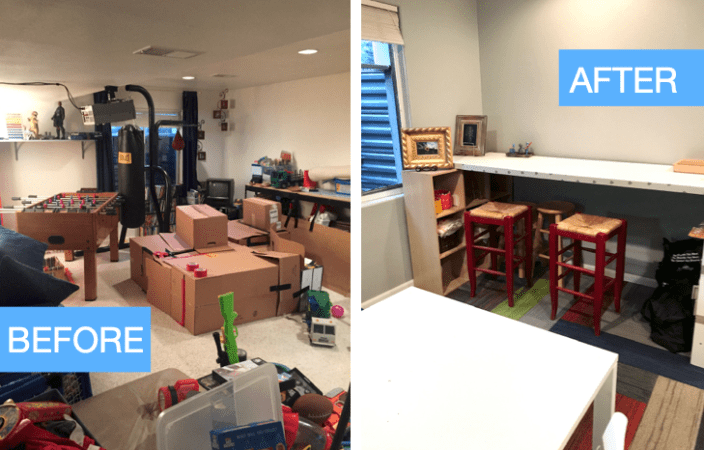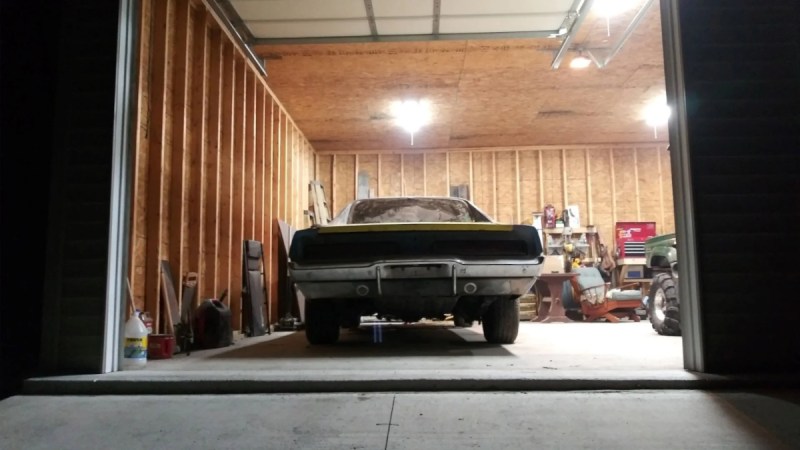We may earn revenue from the products available on this page and participate in affiliate programs. Learn More ›
My late mother did something in the mid-’80s that horrified me and my four siblings: She set all of her china, crystal, doodads, and knickknacks on display and had each of us walk around the tables and “choose what we wanted.” We were given a deadline by which to remove our selections from her home; anything left over was donated to a local charity.
What dismayed me then as depressing and dark makes perfect sense to me now. It apparently also sounds sensible to the thousands of people who are becoming devotees of Swedish death cleaning, a downsizing and decluttering trend that’s sweeping the globe.
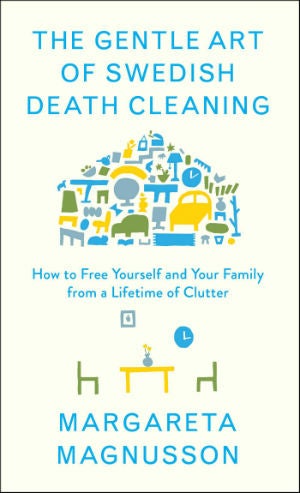
The term, drawn from the Swedish word döstädning (dö meaning “death” and städning meaning “cleaning”), gained notoriety in Margareta Magnusson’s 2018 bestselling book, The Gentle Art of Swedish Death Cleaning: How to Free Yourself and Your Family from a Lifetime of Clutter. Despite its depressing-sounding title, death cleaning is neither morbid nor sad. Sure, it entails dealing with all of your “stuff” yourself before you die and saving your relatives and/or friends from having much at all to clean, donate, or discard. The process also emphasizes appreciating each object before getting rid of it (a concept that will sound familiar to fans of Marie Kondo), and the joys of sharing your most treasured possessions with friends, relatives, and charities while you are still alive.
“So what is death cleaning?” Magnusson writes, pinpointing the exact question so many outsiders and first-timers have, myself included. “For me, it means going through all of my belongings and deciding how to get rid of the things I do not want anymore,” she explains. “Just look around you. Several of your things have probably been there for so long that you do not even see or value them anymore.”
Unlike other major cleaning and decluttering strategies in several respects, though, death cleaning is advised to be a gentle, gradual effort, not a furious spree.
“The difference between death cleaning and just a big cleanup is the amount of time they consume,” Magnusson explains. “Death cleaning is not about dusting or mopping up, it is about a permanent form of organization that makes your everyday life run more smoothly.” Indeed, Swedish death cleaning principles can help most everyone, whether they’re 19 or nonagenarians, live a less cluttered life:
1. Don’t wait until you’re on your deathbed.
Everyone begins considering their mortality at a different age. Magnusson, who describes herself as “between 80 and 100,” recommends that middle-aged people should get with the program sooner than later. It is especially important for people who are approaching retirement and may be looking to downsize or relocate their living spaces. Anyone who is hoping to live a better, more organized life can start death cleaning at any age—the key is to keep at it so clutter doesn’t creep back.
2. Don’t start with sentimental stuff.
Don’t try to kick off your own death cleaning process with old photographs, scrapbooks, or intensely sentimental keepsakes like love letters and children’s artwork. It is too easy to get overwhelmed by the flood of memories and, ultimately, be derailed.
Instead, begin by purging items in storage you rarely use anymore. Sort through all of your closets for linens, clothes, shoes, and accessories that you haven’t touched because they’re outdated or no longer fit. Anything that is torn or stained should be thrown away. Items that are in good condition can be sold in a garage sale or donated to charity. The key question to ask is, “Will anyone be happier if I save this?” If the answer is no, out it goes.
RELATED: Let It Go: 14 Things to Trash Without Thinking Twice

3. Allow yourself to regift items that were given to you.
Magnusson uses a Swedish word, “fulskåp,” which means “ugly cabinet,” to describe the place where unwanted and unloved gifts are stored. She urges people to open the doors to this cabinet and address its contents: things like purely decorative items, unread or read-once books, extra dinnerware, and serving pieces. Don’t hesitate to donate or re-gift this stuff. Indeed, just as the adage states that “one person’s trash is another person’s treasure,” many of these unused items would make perfectly lovely gifts for young adults moving into their first apartment, for example, or first-time homeowners who need furniture and kitchen gear.
RELATED: 8 Genius Ways to Turn Clutter into Cash
4. Get others involved.
You may think you know what things your friends and relatives like, but you may be wrong. The best way to ensure that your unwanted possessions find new leases on life is to invite loved ones over to select their own mementos from among your discarded items. Asking friends and relatives to choose what they want ensures that there are no hard feelings, fights, or surprises after your passing. Bonus: You can enjoy seeing your old pumpkin-shaped casserole dish in use while you are still alive.
As you plan who will receive your most valuable possessions and family heirlooms, it’s especially important to communicate your wishes clearly. If you want your grandmother’s engagement ring to go to your niece, for example, put your wishes in writing. Include an addendum to your will that spells out what should happen to your personal possessions. You might also consider making a video of yourself with these items, explaining to whom they should be given and detailing why you’re dispersing them as you are.
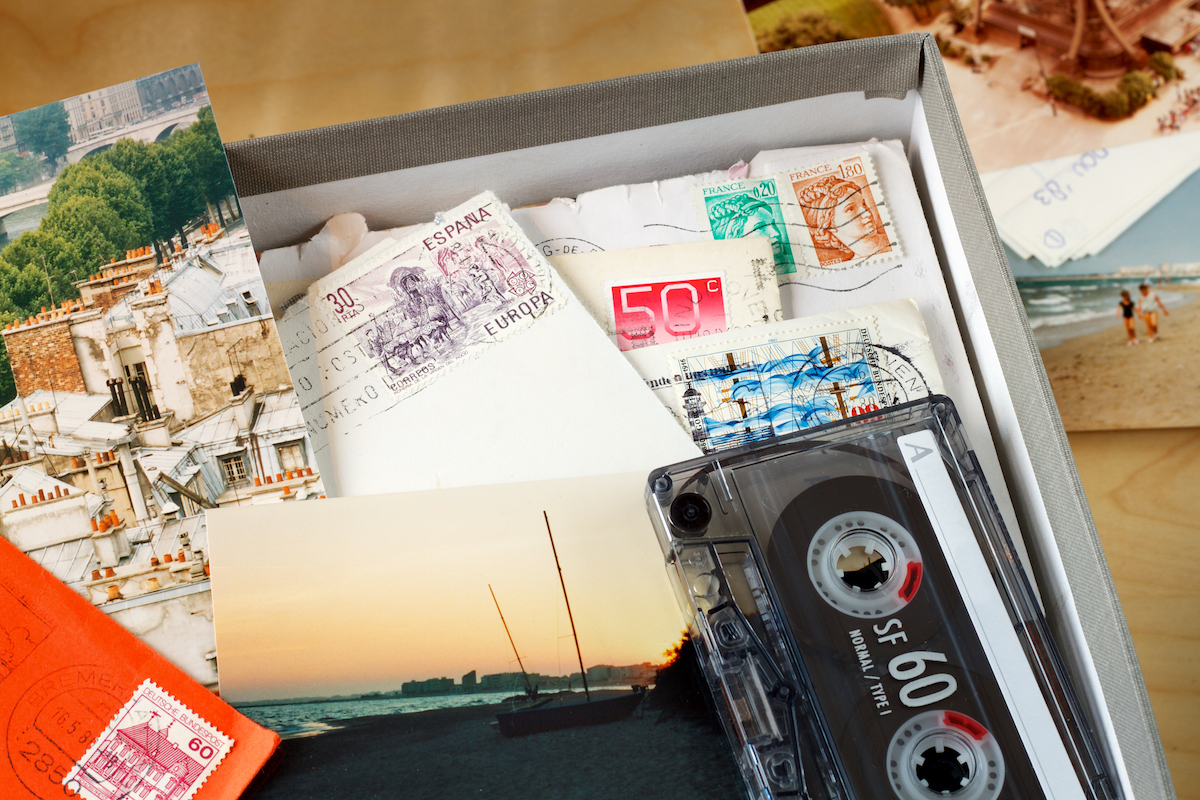
5. Keep the keepsakes, but keep the collection manageable.
You should set aside a small box for personal items and mementos that are important to you and you alone: family photographs, love letters, rosaries, books, even children’s artwork you can’t bear to part with years later. Magnusson suggests that this container should only be about the size of a shoebox, but any small box will do. You can mark the box “Throw Away After I Die,” so that no one feels obligated to hold onto items that hold no real monetary value.
Or, you might do one better to preserve your history for curious future generations. When it comes to old photos, scrapbooks, ticket stubs, videos, and the like, consider digitizing them and keeping copies on your computer, rather than taking up acres of shelf space with photo albums. Make sure to keep backups of all your digitized files, preferably in an alternate location.
6. Slow and steady wins the race.
Swedish death cleaning is a continual process, not a single task you can check off your to-do list. While you may be inclined to give yourself a hard deadline to do it all, don’t. Magnusson allots herself a week per room in her own death cleaning process and takes a break to breathe between each accomplishment.
RELATED: 8 Rules to Break for An Organized Home
Try to repeat this process seasonally or annually, to prevent the clutter from returning. Not only will you spare your surviving loved ones additional emotional trauma and financial burden (from storage unit fees, estate sale companies’ compensations, and more) at the time of your passing, but you’ll also live a better life by decluttering your space. “Life will become more pleasant and comfortable if we get rid of some of the abundances,” Magnusson writes, because “mess is an unnecessary source of irritation.” Who can’t relate to the peaceful feeling that comes when everything finally has a place in the home and you can see work surfaces and kitchen countertops once more?
With Magnusson’s words in mind, I realize now that my mother was on to something. Rather than leave a big mess for us to clean up when she passed away—or, worse, get rid of something that one of us would truly cherish—she dispersed her possessions among us and actually got to see them being used and enjoyed by our various families, including her grandchildren and great-grandchildren. And that’s not morbid at all.
The second book in Magnusson’s The Swedish Art of Living & Dying Series, The Swedish Art of Aging Exuberantly: Life Wisdom From Someone Who Will (Probably) Die Before You (Simon & Schuster), will be published on December 27, 2022 and is available for preorder now. In this new volume, Magnusson reveals “discoveries about aging” and teaches readers why they should not fear death, new technology, or wearing stripes in old age.

